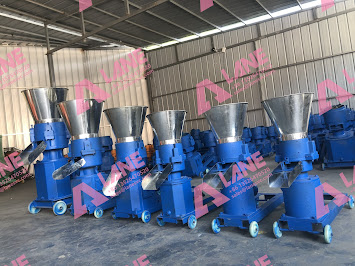From Yard Waste to Garden Gold: How Green Waste Composting Facility Equipment Powers Real-World Success
Every spring, cities across the country are flooded with green waste—bags of leaves, piles of pruning clippings, and heaps of grass trimmings. Without green waste composting facility equipment, much of this would end up in landfills, rotting without purpose. But with the right tools, that same waste becomes a resource: nutrient-dense compost that local farms, community gardens, and even homeowners line up to buy.
Small-Scale Magic: Green Waste Composting Facility Equipment for Community Gardens
Not all composting operations need industrial-sized machines. Take the Oakwood Community Garden in Portland, Oregon. A few years ago, they struggled to handle the 500+ pounds of green waste generated by local residents each month. Then they invested in basic green waste composting facility equipment: a compact shredder to break down branches, a manual turner to aerate piles, and a small screener to sift out sticks.
Today, the garden produces 200 pounds of compost weekly, used to grow tomatoes, lettuce, and herbs that feed 30 local families. “The shredder was a game-changer,” says garden manager Maria Gonzalez. “We used to spend hours chopping branches by hand. Now, the equipment does the heavy lifting, so we can focus on growing.” It’s proof that even simple green waste composting facility equipment can turn a community’s waste into a shared resource.
Industrial Impact: How Large Facilities Use Green Waste Composting Facility Equipment
At the other end of the spectrum is EcoCycle, a commercial composting facility in Austin, Texas, that processes 10,000 tons of green waste yearly. Here, green waste composting facility equipment is the backbone of the operation. A fleet of industrial grinders reduces tree trunks to mulch-sized pieces in minutes. Automated turners—some as big as pickup trucks—roam over football field-sized compost piles, mixing and aerating them with precision.
“Without this equipment, we’d be stuck processing a fraction of the waste,” says operations director James Lee. The facility’s screeners, which use vibrating mesh to separate finished compost from unprocessed bits, ensure their product meets strict quality standards. Local nurseries buy 80% of their output, and the rest goes to city parks. It’s a closed loop: Austin’s green waste is turned into compost, which then helps the city’s green spaces thrive—all thanks to green waste composting facility equipment.
Troubleshooting with Green Waste Composting Facility Equipment: Fixing Common Hurdles
Even the best composting setups hit snags, but the right green waste composting facility equipment can solve them. For example, too much rain can make piles waterlogged and smelly. A portable moisture meter—simple but essential green waste composting facility equipment—lets operators check humidity levels. If things are too wet, they use a turner to mix in dry leaves or wood chips, balancing the pile.
Another common issue? Piles that take too long to decompose. A thermal sensor, paired with a high-powered turner, fixes this. The sensor detects cool spots (where decomposition is slow), and the turner redistributes those areas, ensuring even breakdown. “We used to wait 6 months for compost,” says a manager at a mid-sized facility in Denver. “With the right equipment, it’s down to 3 months.”
Beyond Compost: Green Waste Composting Facility Equipment and Local Economies
Green waste composting facility equipment doesn’t just process waste—it creates opportunities. In Raleigh, North Carolina, a social enterprise called Compost for Good trains formerly homeless individuals to operate composting equipment. They collect green waste from restaurants, process it using shredders and turners, then sell the compost to local businesses.
“Learning to use the equipment gives our team marketable skills,” says founder Lisa Chen. “They go from struggling to find work to being sought-after for composting jobs.” It’s a reminder that green waste composting facility equipment is more than metal and motors—it’s a tool that builds livelihoods, too.
Whether it’s a community garden in Oregon or a commercial facility in Texas, green waste composting facility equipment turns “trash” into treasure. It’s not just about sustainability (though that’s a big part). It’s about connection—linking people, waste, and the land in a cycle that benefits everyone. The next time you toss a bag of leaves into a curbside bin, remember: with the right equipment, that waste is on its way to becoming something that grows.






评论
发表评论